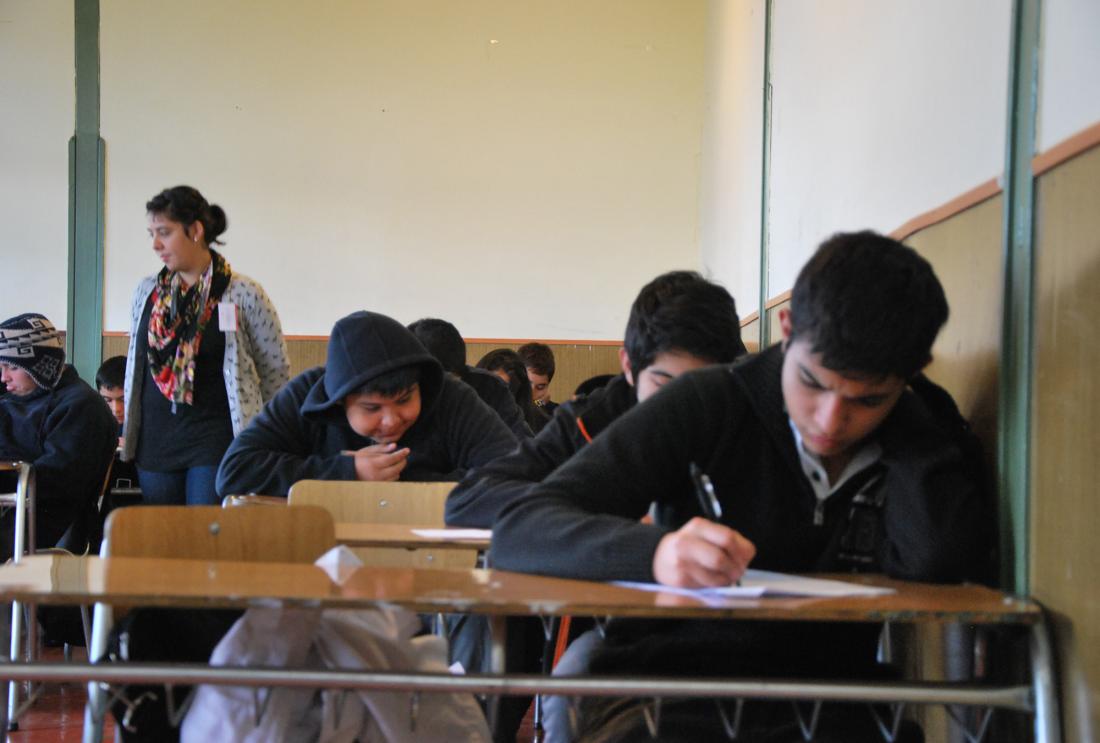Investing in Secondary Schooling in Chile: The role of information about financial aid for higher education
- Students
- Enrollment and attendance
- Student learning
- Information
Policy issue
Increasing access to higher education is an important issue in many countries concerned with economic inequality and social mobility. Children from poor backgrounds in middle- and upper income countries do not advance in large numbers to post-secondary schooling, despite the fact that there are large wage returns to higher education are. Credit constraints provide one plausible reason for this unequal access, and a number of studies, mostly in the US, have shown that providing financial aid for college can substantially raise enrollment and attainment for certain groups of students. However, in less developed countries credit constraints may not be the most immediate obstacle to getting more education. Before families can devise strategies to invest in education, they must first understand the benefits and costs of higher education.
Context of the evaluation
Although 18 percent of Chilean young adults aged 25-34 have completed some form of tertiary education, most of these graduates come from the highest income bracket in the country: In 2006, only 12.7 percent of 18-25 year olds from the poorest ten percent were enrolled in tertiary education, compared to 53.3 percent of the richest ten percent. There are three types of tertiary education in Chile: two-year vocation training, four-year vocational training, and standard, five-year, college degrees. Tuition costs are high for all these degrees: for households in the lowest decile of household income, one year of public university tuition was 141 percent of annual income in 2003, and a year of technical college tuition was 89 percent of annual income. Financial aid is merit-based, so for poor students, good grades and high scores on the college entrance exam are important not just for acceptance into post-secondary school institutions, but also for financing their education.

Details of the intervention
This study provides students with information about how effort and good grades in school can open up opportunities later on for further study, primarily by making it possible to apply for scholarships and government loans. The study targeted students about to enter high school because in the Chilean education system, over 60 percent of students must choose a high school and a field of study at the end of 8th grade.
The researchers developed a 15 minute video entitled “Open the Box” (“Abre la Caja”) that collected together the tertiary education experiences of 13 adults (5 women and 8 men; 9 professional and 4 technical careers) who grew up in poor families in urban Chile. In the video, each person talks about how, by working hard at school and becoming eligible for financial aid, they were able to finance post-secondary education at traditional colleges or vocational schools. Their studies enabled them to become (among other things) civil engineers, graphic designers, chefs, social workers, lawyers and TV commentators. These life stories were intended to (1) inform students about the existence of academic scholarships and student loans for further study, and (2) provide specific details on relevant high school grade cutoffs and PSU (Prueba de Selección Universitaria, a standard achievement test similar to the SATs) cutoffs for scholarship and loan eligibility.
In 56 schools, the video was shown in class, while in 56 schools the video was distributed to students to take home and watch with their parents. The remaining 114 schools served as a comparison group. Three months later, students were given a questionnaire to assess their level of knowledge about the information imparted through the video. Administrative data was also collected from the schools about their attendance rates and test scores.
Results and policy lessons
Exposure to Information:Exposure to “Abre la Caja” increases the fraction of students reporting that they will finance education with a government loan by 4.6 percentage points, and decreases the fraction that do not know how to finance education by 4.2 percentage points. This is a large effect: knowledge of loan opportunities increases by almost 50 percent.
Effect on Expectations: Within academic ability group, the new information may have shifted the types of schooling desired. Students with higher grades are 7 percentage points more likely to report they will study at college compared to students with low grades, while students with low grades are 8 percentage points more likely to report they will study at a vocational training school. This finding is intuitive, given the grade and PSU cut-offs for financial aid eligibility are lower for attending a vocational school than for attending college.
Effect on School Performance: For students assigned to any exposure to the information treatment, absenteeism prevalence falls by 8.8 percentage points on average. This represents a 14 percent reduction, relative to the comparison group mean at follow-up. However, six months after the intervention there was no effect on students’ grades, or on where students chose to enroll in the following academic year.
Difference between Treatments: Parents learn significantly more about financial aid requirements when the video is watched at home, rather than watched in school; however the effect on student behavior is no different between the two treatment groups.




